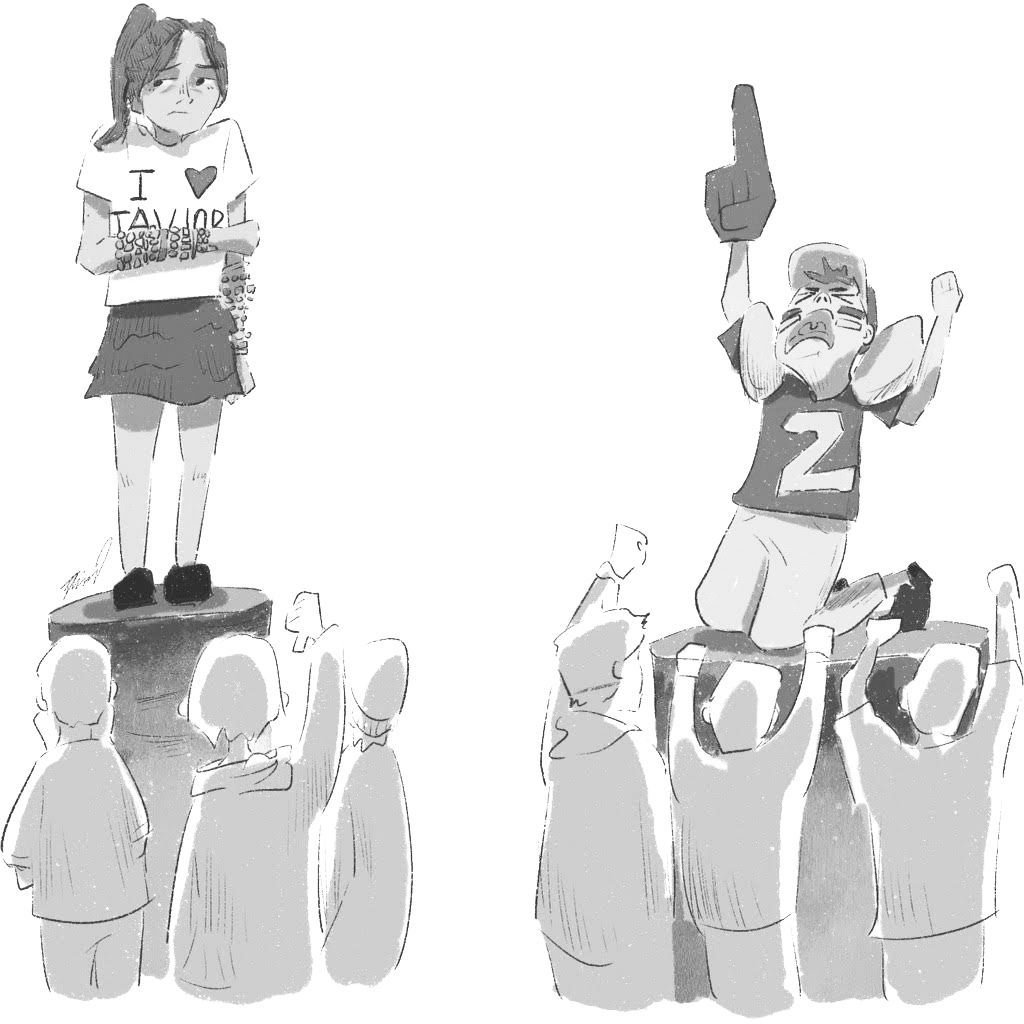A public high school in Arkansas committed an act that came straight out of an American history textbook, March 14. For three students of Greenbrier High School, a nightmare that generations before them faced came to life as they were “paddled” after they decided to participate in the national walkout against gun violence.
The most surprising part? The students’ parents agreed to the use of corporal punishment.
For generations, violence from both teachers and parents was an acceptable form of discipline in the U.S. It wasn’t until the late 20th century that corporal punishment became less accepted because of the increased number of findings against its use. According to the University of Chicago’s annual General Social Survey, approval of corporal punishment has declined 18 percent since 1986, from an 85 percent approval rate in 1986 to a 67 percent approval rate in 2016. However, in this day and age, this dangerous practice is still prevalent in nearly half of the U.S., where children can legally be hit as punishment in schools. In all 50 states, however, this form of discipline is legally allowed in the home. The law condones violence, when most of society doesn’t. And with the resounding scientific consensus surrounding the issue, it’s ridiculous how the law hasn’t been changed. Corporal punishment is ineffective, and often leads to the opposite of the intended effect.
In a notable study conducted by Elizabeth Gershoff, a professor of human development and family sciences at the University of Texas, Austin, data collected over 62 years directly linked the use of corporal punishment to increased aggression in children. The study also tested other variables, such as mental health, criminal and antisocial behavior, and abuse of other family members. For the 11 variables tested, 10 negative associations were found, meaning that the use of corporal punishment led to increased harm to both the child and their surroundings.
This also applies outside of family dynamics. A study by Victoria Talwar, professor of cognitive development at McGill University, followed students in both a punitive environment and a non-punitive environment. Talwar found that an environment in which corporal punishment is used has long-term harmful effects on students’ memory, self-control, and communication. Additionally, the group of students that did not receive such punishment scored significantly higher on all tests given to them during the study. It’s shocking how corporal punishment is advocated for in certain school systems, even though it has no positive effect. Because it has detrimental effects in the home as well, it should be outlawed in both fronts.
Despite the overwhelming consensus of these reports, there are still proponents who say that corporal punishment is necessary to keep children in line, regardless of the damage it inflicts. Therefore, it should be kept legally. Granted, it can be argued that many of these studies do not distinguish the difference between minor actions like spanking and more serious actions like physical abuse. While it is true that the studies are not very nuanced, the general message stays the same: physical consequences do make children more likely to comply to authority figures, but such measures are detrimental in the long term. And because of the violent mindset behind physical punishment, it can easily escalate into abuse. It’s easy for parents or teachers to be extremely frustrated with their children, but releasing that frustration by inflicting physical pain can easily lead to more aggressive action.
The problem is that the use of corporal punishment teaches children that the appropriate response to conflicts with other people is immediate violence. This discourages them from using more effective solutions like using one’s words. This often leads to cycles of aggression from people who grew up being disciplined in that manner. In Gershoff’s study, those who were disciplined physically were more likely to be abusive to their future spouses and children.
Many children also developed symptoms of post-traumatic stress disorder (PTSD) after years of physical punishment. Tara Adams, a famous opponent of corporal punishment, experienced harsh beatings from her father with a belt, from her childhood through her teenage years. She received flashbacks of the beatings, and many psychologists diagnosed this as a symptom of PTSD. It is easy for corporal punishment to evolve into abuse, putting the child at risk for long-term mental health issues. If child abuse is universally illegal, why is it’s gateway still considered okay to keep legal?
In the interest of our children, who we must hand over the future to, corporal punishment needs to be outlawed everywhere. It teaches children to use violence as a solution to their problems, rather than encouraging cooperation and understanding. If we let this continue, the future will be as problematic as the actions that created it.





